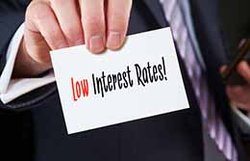Many small business owners rely on interest rates only to determine which funding option offers the best, most affordable terms. But price is not, and should not be your only determining factor.
Every day, we at Wellen Capital meet with small business owners like you who are simply trying to do what’s best for their businesses. Most of our customers are operating well, but need a boost in capital for any number of reasons; it’s not always about fixing something that’s wrong, but could just as likely be used for funding an expansion, or taking advantage of a bulk discount for a supplier.
Our customers are coming to us because of our product availability—we have more options and alternatives available to small businesses than traditional banks. But because traditional banking options are so familiar, it can become easy to evaluate capital advances by the same standards as traditional loans. That is, to rely on interest rates in determining the cost of capital.
An example: small business loans from the SBA will charge an interest rate of anywhere between 3.59% to 8.0%, plus any applicable fees, depending on the loan program, borrower’s credit rating, and other qualification factors. Let’s say you can qualify for a $100,000 SBA loan at 8.0% over 5 years. That means your monthly payment comes to $2,027.64. No matter how your business performs, the bank will require you to pay that same $2,027 payment every month.
On the other hand, let’s say the traditional bank loan is not attainable, and instead you qualify for a $100,000 capital advance. You’re told that the interest rate is 12% on those funds, and so you become nervous about the 4-point difference in rate, but instead of a flat monthly payment, the capital advance provider withdraws 13% of your monthly sales. When sales are good, you end up paying more toward that advance. When sales are slow and your cash flow feels strained, well, good news: your payment is smaller that month.
In reality, the 4-point difference in interest rate is moot. The traditional bank doesn’t care that you had a slow month, but your capital advance provider will account for that. And when sales are good, you both benefit. If you had initially eliminated the capital advance option because of the higher perceived interest rate, you could have ended in a position where you hurt your cash flow, or, worst case, had no additional capital available.

